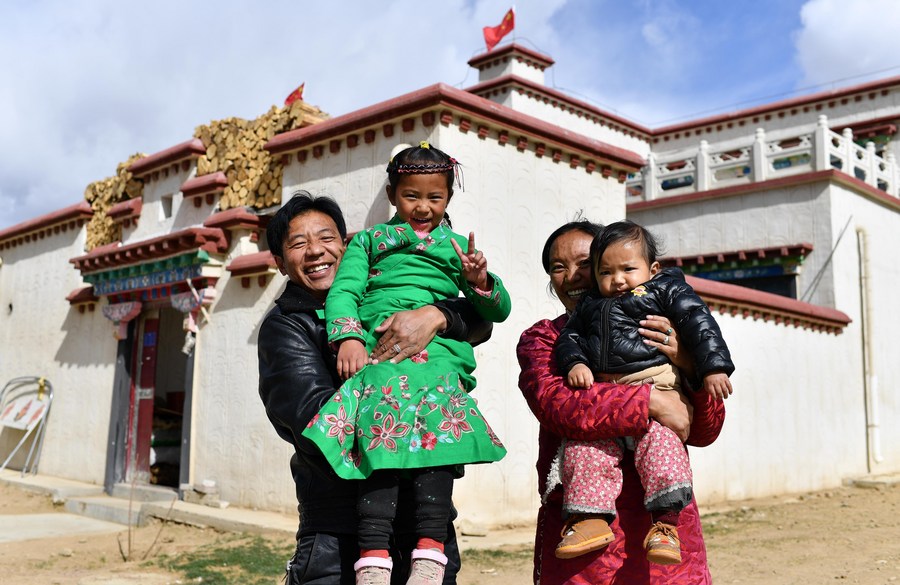Xinhua | October 21, 2022
EXPAND AND SHARE THE PIE
An essential requirement of socialism and a key feature of Chinese modernization, common prosperity refers to affluence shared by everyone. But what China desires is not egalitarianism.
"To use an analogy, we will first make the pie bigger, and then divide it properly through reasonable institutional arrangements," Xi said in a special address at the 2022 World Economic Forum virtual session in January.
"As a rising tide lifts all boats, everyone will get a fair share from development, and development gains will benefit all our people in a more substantial and equitable way," Xi said.
"China's idea of common prosperity for all is a unique one, and it's not building castles in the air," said Liu Shangxi, head of the Chinese Academy of Fiscal Sciences.
The measures outlined in the report show that the country not only pays attention to income distribution, or "dividing the pie," but also makes a point of "making the pie bigger," which is the prerequisite and foundation for achieving common prosperity, Liu said.
Promoting common prosperity has been a persistent objective of the CPC. Constant efforts have been made since the founding of the People's Republic of China, with landmark feats achieved in the past decade, including vanquishing absolute poverty and finishing building a moderately prosperous society in all aspects.
The vision gained particular domestic and global attention in 2020, with its goals defined in the 14th five-year plan for national economic and social development and long-range objectives through 2035. The document called for more tangible and solid progress to be made by 2035.
In the world's largest developing nation, imbalanced and insufficient development is still prominent, and the development and income gaps between urban and rural areas as well as between different regions remain wide, Liu said.
With neat new houses and enhanced access to medical care, education and employment, residents in the ethnic minority border town of Kyipa in southwest China's Tibet Autonomous Region have seen sea changes in the past decade.

Local residents pose for a photo in front of their new house in Gurum Town of Lhasa, southwest China's Tibet Autonomous Region, April 2, 2020. (Xinhua/Zhan Yan)
"However, the living standards are still low compared with those in the more developed regions of China," said Sonam Dekyi, head of the town and a delegate to the congress, who spent her college days in a bustling city in central China's Hunan Province.
"These gaps will drag China's high-quality development, and that's why China has put promoting common prosperity on the agenda despite the goal's long-term nature," said Liu. "There is no time to lose."
EFFORTS IN FULL SWING
Concerted efforts across the nation are progressively bringing the objective of common prosperity to fruition by utilizing past knowledge and blazing new trails.
As with many of China's other endeavors, the push for common prosperity has its pioneers. In 2021, China issued a guideline to build Zhejiang into a demonstration zone to basically achieve common prosperity by 2035.
To narrow the gap between its rich coastal areas and less affluent mountainous regions, Zhejiang has enhanced cooperation between them via a string of pairing-up plans.
The province has also rolled out tailored policies covering various communities to expand the middle-income group while raising the pay for low-income residents.

This aerial photo shows workers conducting routine cleaning along a river in Dongheng Village of Deqing County in Huzhou City, east China's Zhejiang Province, April 12, 2022. (Photo by Wang Zheng/Xinhua)
In northwest China's Ningxia Hui Autonomous Region, a charity project has been introduced to pool social resources to improve public services like employment and elderly care.
In an innovative attempt to narrow regional environmental gaps, Zhejiang and its neighboring Anhui Province have piloted a water sharing and compensation program, allowing the latter's river to transfer clean water to the former's water bodies in a bid to improve water quality.
A similar scheme has been practiced in the trading of carbon sink across the country. In southwest China's mountainous Guizhou Province, many villagers can boost their income by planting trees, as the carbon that the trees absorb and store can be sold to individuals, institutions and enterprises looking to cut their carbon footprints.
Lei has a big vision for further boosting the income of local villagers. Her town is building a large highly automated moss seedling base that can develop a variety of products to expand the dividends for Maoyang and other towns.
"The moss is low-key but tenacious. Similarly, we'll stay down-to-earth and enterprising in working toward the goal of common prosperity," Lei said.

